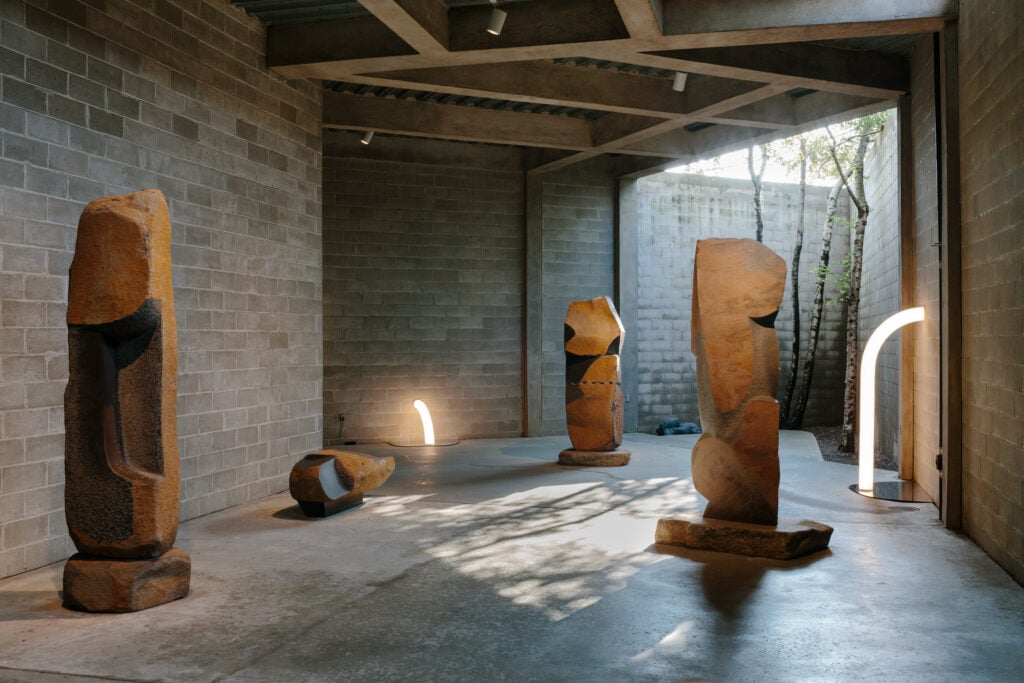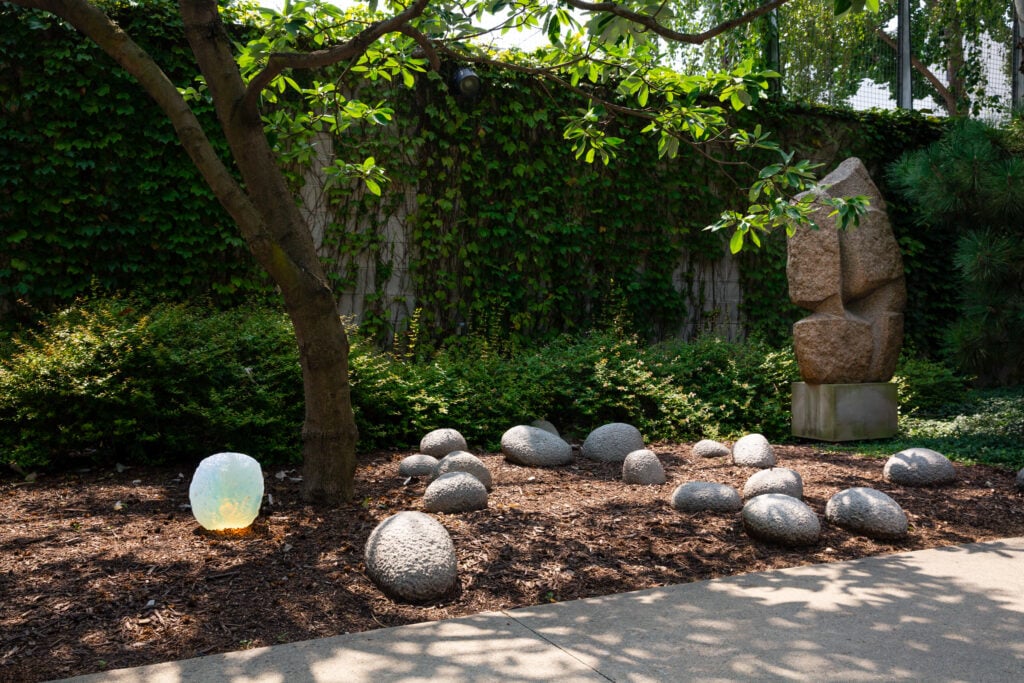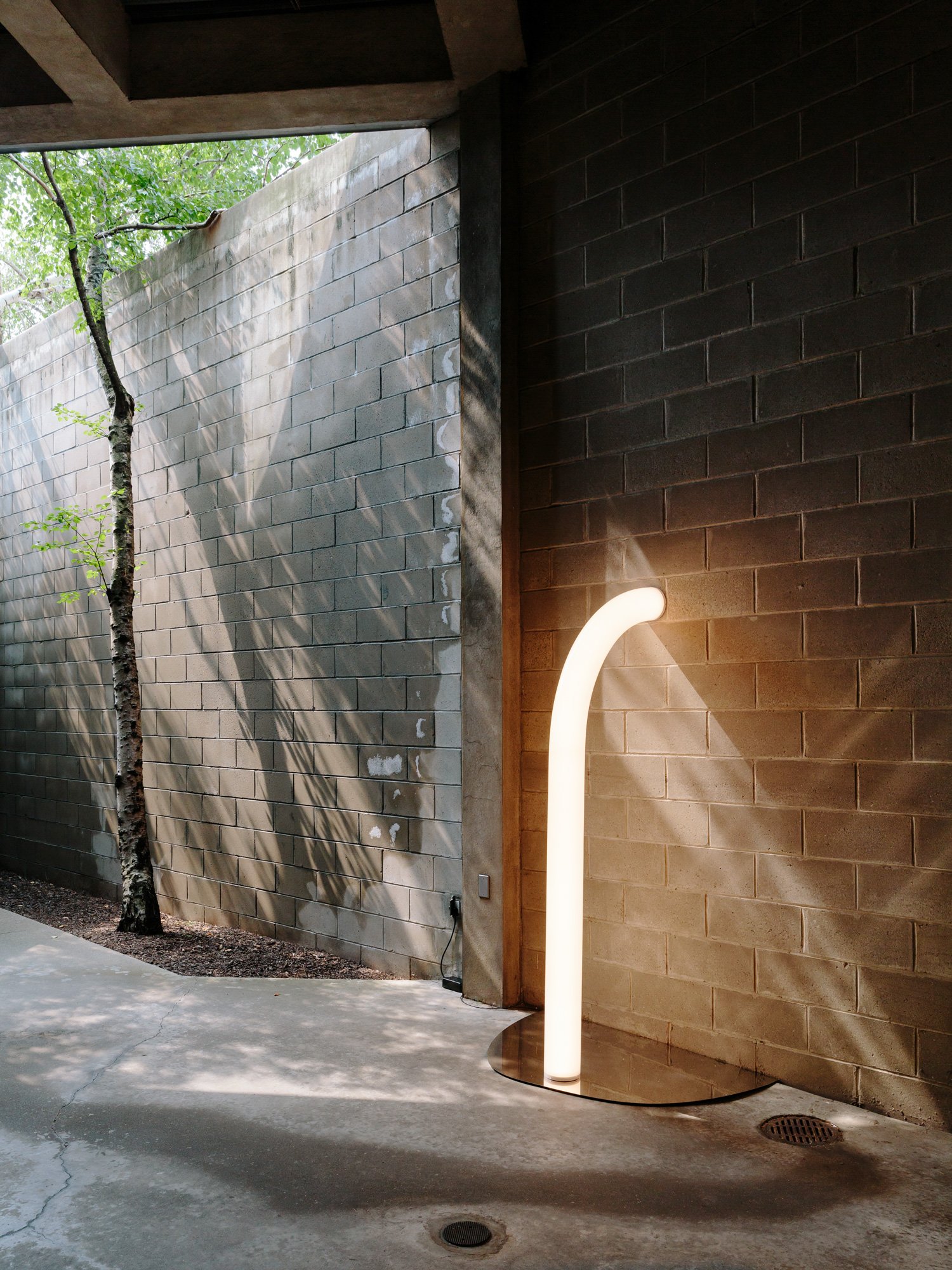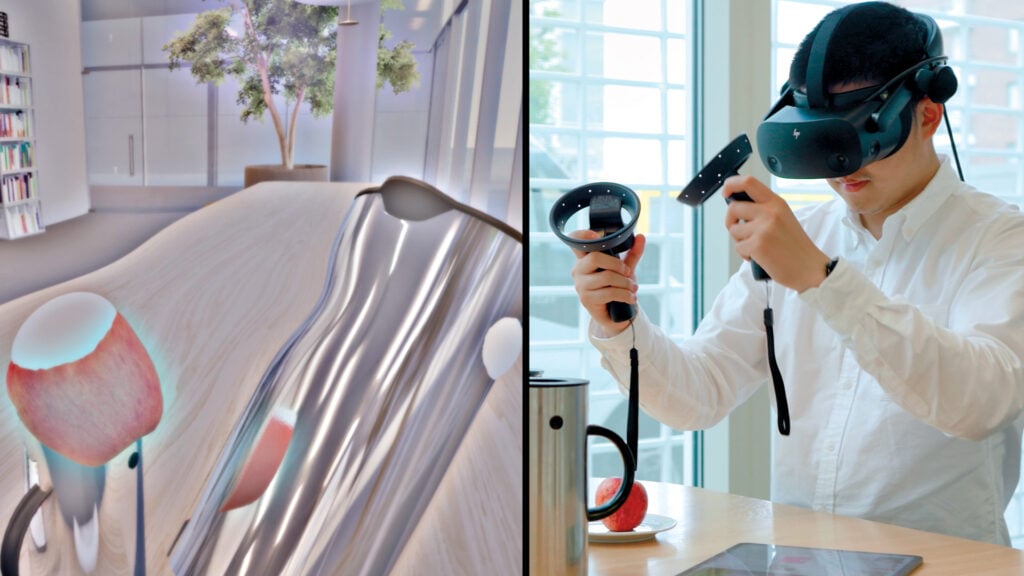
September 17, 2021
Objects of Common Interest Gets Up Close and Personal with Isamu Noguchi
All my work, tables as well as sculptures, are conceived as fundamental problems of form that would best express human and aesthetic activity involved with these objects.
Isamu Noguchi, The League Quarterly (1949)

New York and Athens-based studio Objects of Common Interest follows a similar philosophy. The architecturally-trained duo—Eleni Petaloti and Leonidas Trampoukis—describe their approach as creating objects and spaces that are moments of unfamiliar simplicity and abstract empirical tools of social function. Whether creating sculptures or furnishings, they’re untethered by categorization or fleeting trends. “We’re more interested in how forms, without overcomplicated decorative maneuvers, can have secondary layers of experience that are revealed through use: illusionary elements that appear solid but are actually soft,” says Petaloti “We like [to subvert] common notions of function and aesthetics.”
A new exhibition at The Noguchi Museum in Queens, New York intersperses key recent works by Objects of Common Interest throughout the institution’s vast permanent collection. Hard, Soft, and All Lit Up With Nowhere to Go runs through February 13, 2022. Mounted by senior curator Dakin Hart, these compelling juxtapositions reveal nuanced associations in formal exploration: proportion, monumentality, architectonic articulation, and organism.

“There are multiple narrative layers that one can perceive when moving though the museum and the installations,” says Trampoukis. “Our work spans mediums, materials and scales, without a set aesthetic. We’re more interested in playing with ambiguity and perception.”
Though Hart and his team rearranged some of Noguchi’s sculptures to better facilitate these vignettes, the process was entirely intuitive. While Objects of Common Interest’s acrylic-cast Offerings–Rock III series and inflatable Standing Stones populated the museum’s rock garden, the crystalline Tube Light I and Tube Light II co-habitat with Noguchi’s late-career basalt and Manazuru stone sculptures.oth bodys of work challenge the boundaries of what’s a object and what’s a space. Upstairs, columnar masterpieces are organized to evoke an Ancient Greek courtyard with the duo’s cobalt blue Formation series denoting the Aegean Sea. More of these placements can be found in various corners of the museum. They promote a sense of physical engagement; something we’re all in dire need of.
“The aim of the exhibition, like most of the programs we do with creative people other than Noguchi, is to open up various facets of his thinking, without trying to explain them,” says Hart. “When programming this exhibition we expressed a hope, perhaps even an expectation, that we could return the museum into a space of playful and aimless interaction by this fall. After all the collective stress we’ve endured, this will be a not entirely useless sort of folly.”
Would you like to comment on this article? Send your thoughts to: [email protected]
Latest
Products
Four Pieces of Software By Architects, For Architects
These free, open-source technologies were developed by architecture teams to fill gaps in today’s software offerings.
Viewpoints
Google’s Ivy Ross Makes Sense of Color
METROPOLIS sits down with Ivy Ross, Google’s vice president of hardware design, to discuss Making Sense of Color, now on view during Salone del Mobile 2024.
Viewpoints
Two Sustainability News Updates for Q2 2024
The building industry makes vital moves toward standardization and transparency on energy efficiency and social impact.










